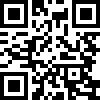
载流子浓度的优化一直是新型半导体开发应用中(应用于诸如热电、透明导体和光伏等)的重要挑战。这个瓶颈在高通量的材料性能预测中尤其严重,由于计算量巨大,载流子浓度通常只能被假定为自由参数,其掺杂极限无法预测。
来自美国西北大学、科罗拉多矿业学院和美国国家可再生能源实验室的研究团队,探索了机器学习在载流子浓度预测方面的应用。他们将类金刚石半导体材料体系中127种化合物的载流子浓度的实验极限值用作机器学习数据集,采用多种统计和机器学习方法对数据进行分析,进而准确预测了类金刚石半导体材料的掺杂性能。其预测精度,不论对于p型还是n型,与实验值偏差都在一个数量级以内。最后他们通过将掺杂性能预测与高通量的品质因子预测相结合,预测出了一些新型的热电材料,这些材料值得后续实验研究关注。
该文近期发表于npj Computational Materials
4
: 71 (2018),英文标题与摘要如下,点击https://www.nature.com/articles/s41524-018-0123-6可以自由获取论文PDF。

Empirical modeling of dopability in diamond-like semiconductors
Samuel A. Miller, Maxwell Dylla, Shashwat Anand, Kiarash Gordiz, G. Jeffrey Snyder & Eric S. Toberer
Carrier concentration optimization has been an enduring challenge when developing newly discovered semiconductors for applications (e.g., thermoelectrics, transparent conductors, photovoltaics). This barrier has been particularly pernicious in the realm of high-throughput property prediction, where the carrier concentration is often assumed to be a free parameter and the limits are not predicted due to the high computational cost. In this work, we explore the application of machine learning for high-throughput carrier concentration range prediction. Bounding the model within diamond-like semiconductors, the learning set was developed from experimental carrier concentration data on 127 compounds ranging from unary to quaternary. The data were analyzed using various statistical and machine learning methods. Accurate predictions of carrier concentration ranges in diamond-like semiconductors are made within approximately one order of magnitude on average across both p- and n-type dopability. The model fit to empirical data is analyzed to understand what drives trends in carrier concentration and compared with previous computational efforts. Finally, dopability predictions from this model are combined with high-throughput quality factor predictions to identify promising thermoelectric materials.




